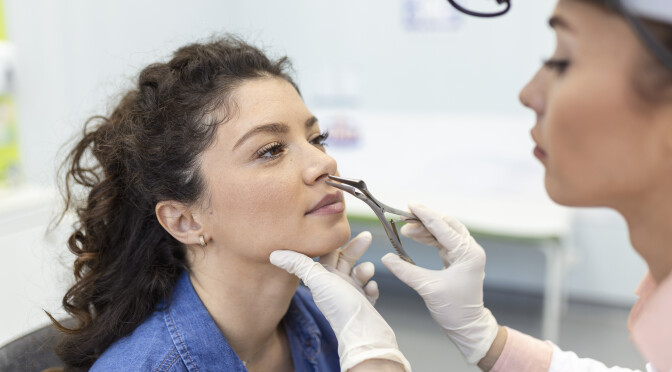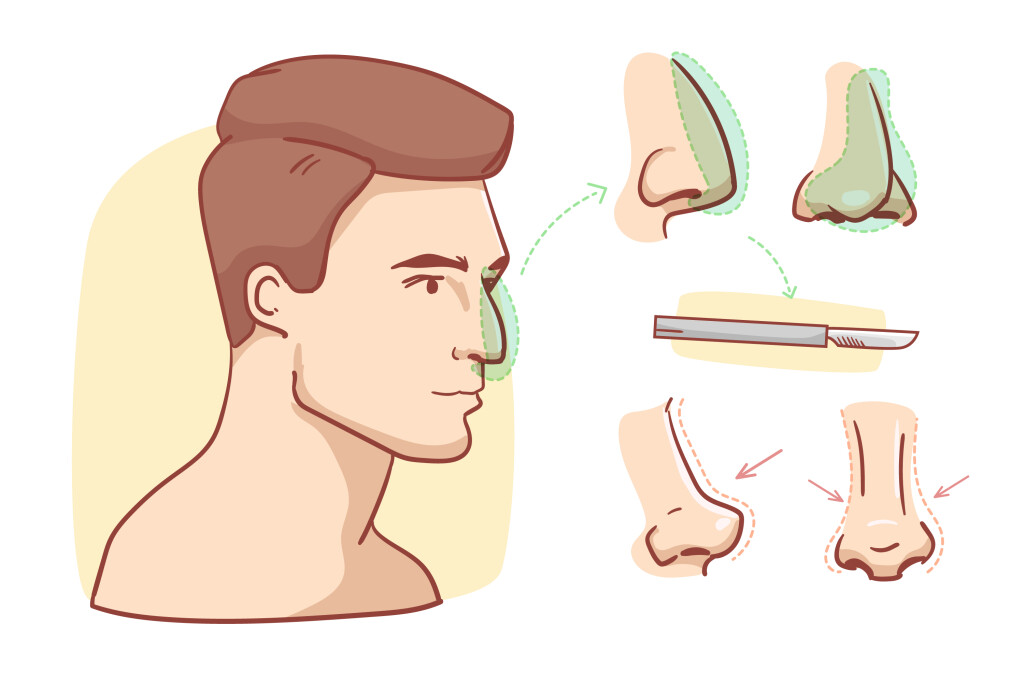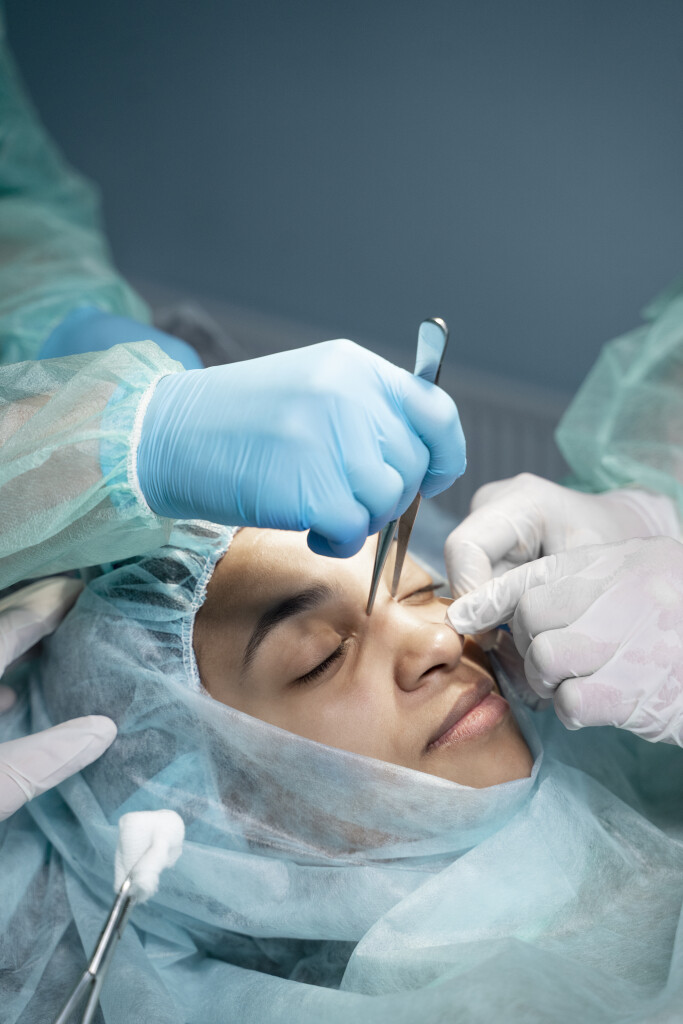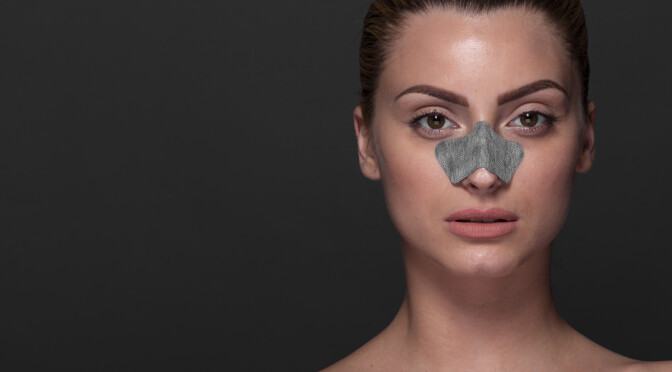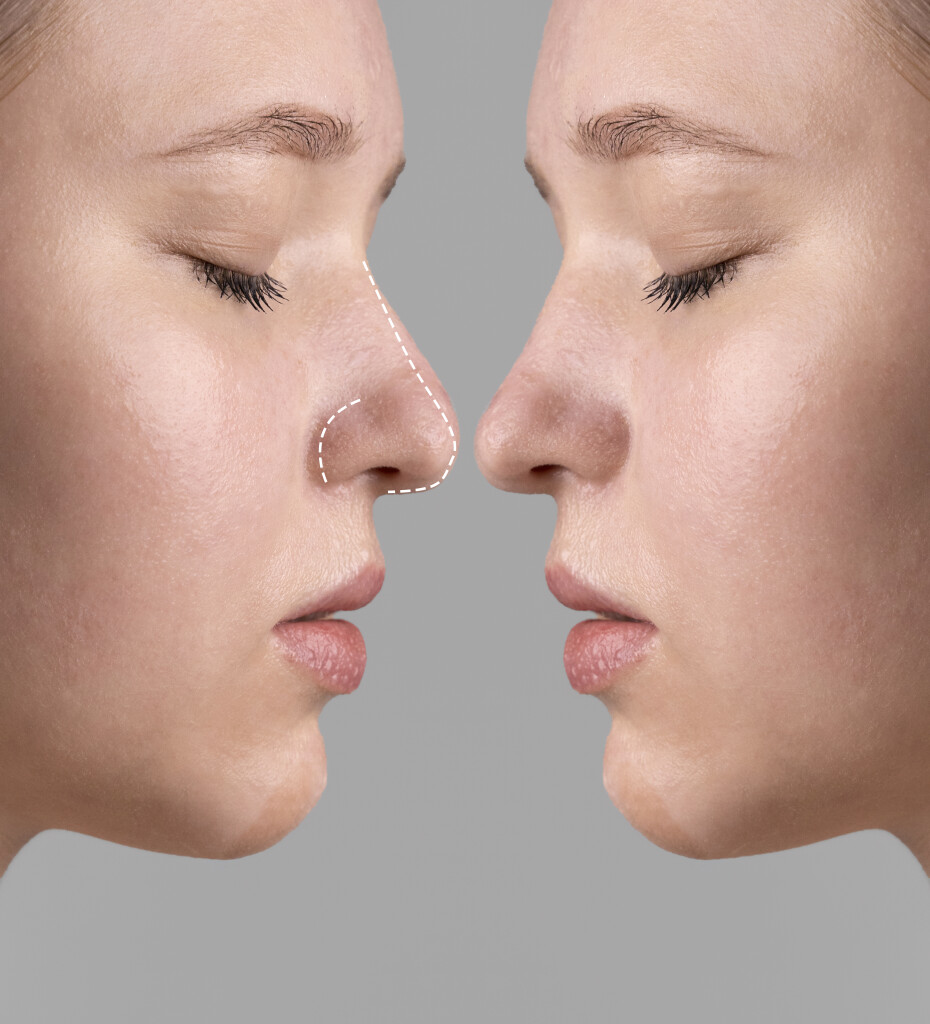Introduction:
Nose Job Surgery: Changing Your Nose for a Better You. Have you ever looked in the mirror and wished your nose looked different? Many people feel the same way. That’s why some choose to have a nose job, also known as rhinoplasty. It’s like giving your nose a makeover!
People decide to get a nose job for different reasons. Some want to feel happier about themselves. Others might want to fix something about their nose since they were born. Some people need it to heal after an accident. And sometimes, people feel pressure to look a certain way, even if it’s not realistic.
Deciding to get a nose job is a big deal. It’s important to think about the good things it can bring and the risks involved. It’s like making a careful choice to help you become the best version of yourself.
What Is Rhinoplasty (Nose Job Surgery)?
Rhinoplasty, known as a “nose job,” is a surgical procedure done to reshape the nose. The goal is to improve the appearance and proportion of the nose. It’s also to correct impaired breathing.
How it works
Rhinoplasty is a surgery to change how your nose looks. During the surgery, the doctor makes cuts to reach the bones and cartilage that support the nose. These cuts can be inside the nostrils (closed rhinoplasty) or outside on the strip of skin between the nostrils (open rhinoplasty). This is for more complicated cases.
The doctor then changes the shape of the nose by adding, removing, or reshaping the bone and cartilage. Sometimes, tissue from other parts of your body might be used to make the nose look different. Rhinoplasty can make the nose smaller or bigger, change the shape of the tip or bridge, narrow the nostrils, and fix problems from injuries or birth.
So, in simple terms, rhinoplasty is a surgery to make your nose look the way you want it to.
Recovery
Recovery from rhinoplasty takes several weeks. The initial swelling will subside within 2 to 3 weeks but final results may take up to a year. Patients should avoid strenuous activity and sun exposure for the first few months. They should also avoid alcohol for that time. Minor residual swelling and redness may continue for up to a year. Initial results are seen once the cast is removed. However, the nose will continue to refine over the following months. Patients can usually return to work after 1 to 2 weeks but strenuous activities should be avoided for 4 to 6 weeks.
Why people seek it
The most common reasons for rhinoplasty include:
- Dissatisfaction with the size or shape of the nose. A nose that is too large, wide, or crooked can be a source of self-consciousness for many people. • Difficulty breathing. Rhinoplasty can correct structural issues to improve nasal function. • Injury or trauma. An injury can alter the appearance and function of the nose. This makes rhinoplasty desirable to restore form and improve breathing. • Congenital defect. Rhinoplasty may be recommended for children and adults to correct a birth defect like a cleft nose.
Rhinoplasty can have a significant impact on one’s self-confidence and quality of life. When an experienced surgeon does it, rhinoplasty can enhance and balance facial features. It can give the patient the nose they’ve always wanted.
Reasons People Pursue Nose Surgery
People pursue nose surgery, also known as rhinoplasty, for a variety of reasons. Some of the most common motivations include:
Appearance
Some folks get nose jobs to make their nose look better. If a nose is too big, wide, or crooked, it can make a person feel not so good about their appearance. Nose surgery, also known as rhinoplasty, can help by making the nose smaller, changing the tip, or fixing any crooked parts. It’s like giving your nose a little makeover!
Health issues
Some people get nose surgery to correct problems that interfere with their breathing or sinus function. A deviated septum, nasal valve collapse, or other structural issues can cause difficulty breathing. They can also cause frequent nosebleeds, congestion, or other issues. Rhinoplasty can repair these problems and improve nasal function.
Self-esteem
For some, dissatisfaction with their nose impacts their self-confidence and self-image. Even a nose that functions and looks fine to others can make someone feel flawed or inadequate in their own eyes. Nose surgery can help remedy long-held insecurities. It can also improve self-esteem by creating a nose the patient feels good about.
Career reasons
In certain careers like acting, modeling, or public speaking, appearance and image play an important role. An undesirable nose shape or size may be seen as a barrier to success in these fields. Nose surgery can help achieve a nose that complements and enhances one’s image, helping to open up more career opportunities.
Some people decide to get a nose job, which is also called rhinoplasty. The reasons for this can be different for each person. It’s not just about making the nose look better; it’s often about feeling better about yourself.
People might think getting a nose job is only about changing how you look, but for many, it’s more than that. It’s a way to feel good about yourself and be more confident in yourself. Everyone has their reasons for choosing to have a nose job, and it’s about what feels right for them.
Risks and Complications of Rhinoplasty
Getting a nose job, called rhinoplasty, can make your nose look better. But, some problems can happen. You need to know that it might take time to get better, and there could be some side effects.
It’s important to be realistic about what might happen during recovery. Also, consider the possible issues that could come up.
Infection
When you have surgery on your nose, like rhinoplasty, there’s a chance you could get an infection. Infections can make you feel worse. The doctor gives you a medicine called antibiotics to stop that from happening. But, you need to watch for signs of infection. These include increased pain, the area around your nose getting redder or more swollen, or pus coming out. If you notice any of these things, go see your doctor so they can help you get better.
Nasal obstruction:Nose job surgery
Rhinoplasty may cause temporary nasal obstruction from swelling. In rare cases, it can also cause permanent nasal obstruction. This happens if the surgery impacts your nasal passages or valves. Discuss this risk with your surgeon before the procedure.
Unsatisfactory results:Nose job surgery
A skilled surgeon can achieve natural-looking results. However, rhinoplasty is not an exact science. The outcome may not match what you and your surgeon discussed before the surgery. Additional surgery may be needed to revise the appearance and function of your nose.
Numbness:Nose job surgery
Temporary numbness around the nose and upper lip is common after rhinoplasty and typically resolves within a few months. Permanent numbness can also occur, though rare. Talk to your doctor about ways to minimize this risk.
Scarring:Nose job surgery
When doctors make cuts inside your nose, there’s usually not much scarring. But if they cut outside, there might be small scars. Scars are usually not a big problem, but it can be different for everyone and depends on how the surgery is done. Your doctor can talk to you about ways to hide any scars outside.
Sometimes, there can be small issues with the nose job, but they are usually not a big deal. It’s important to choose a certified doctor. Follow their instructions before and after the surgery. Also, it’s good to have realistic expectations about how your nose will look and how long it takes to heal. Nose job surgery When done well, a nose job can enhance your appearance and confidence for years to come. But go into it with your eyes open to the possible risks and side effects along the way.
Recovery after a Nose job surgery
- Rest: Lie down with your head up for a few days. Don’t do too much, and avoid hard exercises. Don’t bend over or blow your nose, as it can slow down healing.
- Ice: Put ice on your nose for 10-20 minutes, a few times daily. It helps with swelling and bruising. Always wrap the ice in a towel before using it.
- Medication: Take all the medicines your doctor gives you. This helps with pain and prevents infections. You might get headaches or a stuffy nose after the surgery, and the medicine will help.
- Follow-up Appointments: Go to all your appointments with your doctor. They’ll check how you’re doing, look for problems, and make sure your nose looks good. Stitches are usually removed after 5-7 days, and casts or splints are taken off after 1-2 weeks.
- Return to Normal: You can go back to work or school in 1-2 weeks, but avoid hard exercises for 3-4 weeks. Nose job surgery It takes a few months for your nose to fully heal, and up to a year for the final look. Be patient, and soon you’ll see your new nose!
Follow your doctor’s advice carefully. Rest, use ice, take your medicine, Nose job surgery go to your check-ups, Nose job surgery and slowly get back to your normal routine. The little discomfort now will be worth it when you see the great results of your nose job! Stay positive!
The days and weeks following your rhinoplasty are critical. They determine the success of your nose job. Nose job surgery Proper aftercare and recovery will help reduce swelling and the risk of infection. It will also ensure full healing.
Achieving Facial Harmony without Surgery
Achieving facial harmony doesn’t have to involve going under the knife. There are several non-surgical options you can try to enhance your natural features and bring balance to your face.
Focus on self-care. Get enough sleep, eat a healthy diet, drink plenty of water, and avoid excessive sun exposure or tanning to keep your skin clear and hydrated. Your overall health and wellness will reflect in your face and complexion.
Consider cosmetic treatments. Microdermabrasion and chemical peels can improve skin tone and texture without surgery. Nose job surgery They remove the outer layer of the skin to boost collagen production and cell turnover. The results are subtle but can make a difference. You might also try dermal fillers to add volume and lift facial contours in a natural-looking way. The effects last 6-18 months before needing a touch-up.
Practice putting on makeup. When you practice, you get better at using makeup to make your face look more balanced and even. You can learn tricks like contouring and highlighting to make small flaws less noticeable and show off your best features. Nose job surgery Watch online videos to learn how professionals do it. Keep your makeup looking natural, and don’t put on too much.
Consider talking to someone about your feelings. A counselor or therapist can help if you’re not happy with how you look. They can help you with self-esteem or body image issues. Talking to someone can give you a better and more realistic view of yourself. It might make you feel more comfortable and confident.
Even though surgery might seem like a quick way to change how you look, it’s better to focus on non-surgical options and taking care of yourself. Nose job surgery Aim to be the healthiest and most natural version of yourself. Nose job surgery Learn to like the face you were born with, flaws and all. Real beauty comes from inside, not from trying to look like what society says is perfect.
Conclusion
So in the end, you have to weigh up the pros and cons for yourself. A nose job could give you a boost in confidence and self-esteem by helping you achieve a look that better matches your ideal. But it’s not a decision to take lightly. Nose job surgery The risks are real, the recovery can be tough, and there’s no guarantee of a perfect result. Maybe the biggest question is whether changing your appearance will make you happy in the long run. True beauty comes from within, not from the shape of your nose or any other part of how you look. Learn to love yourself as you are – that’s a gift more valuable and lasting than any surgical procedure.

